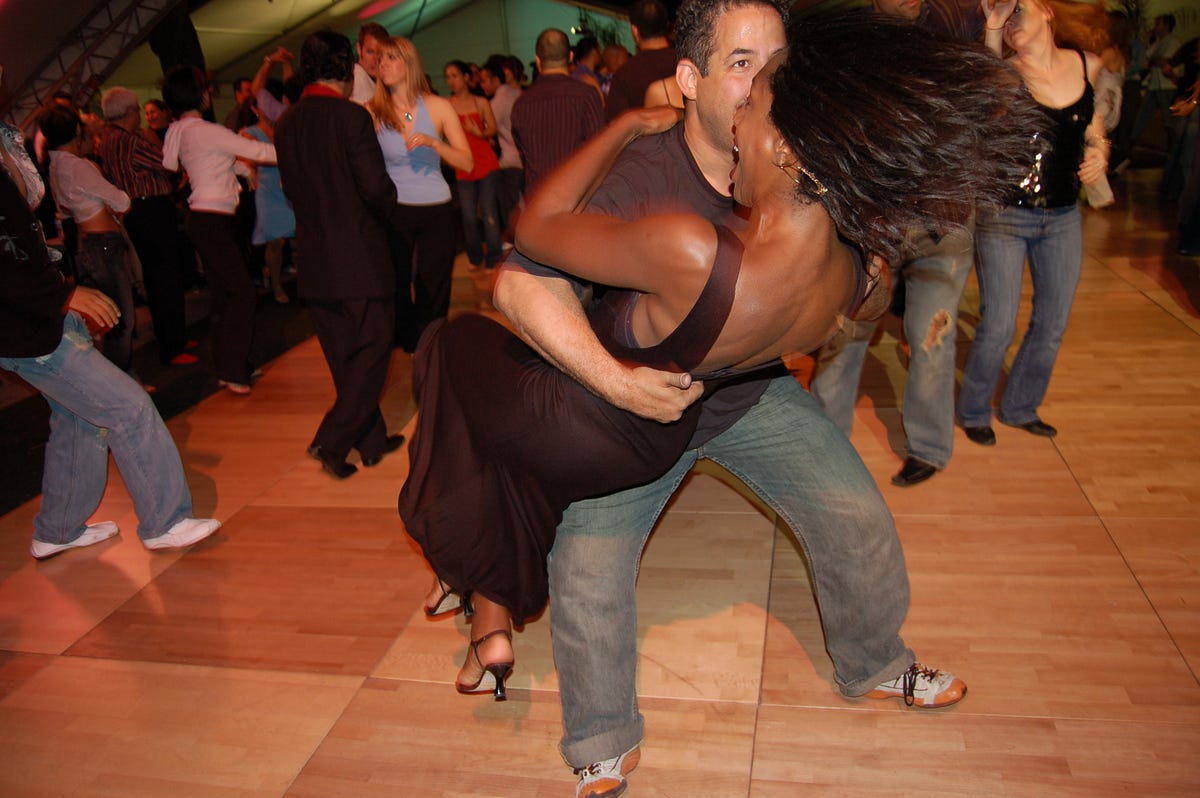What Does Dance Fridays Do?
Wiki Article
A Biased View of Dance Fridays
Table of ContentsUnknown Facts About Dance FridaysSee This Report about Dance FridaysGet This Report on Dance Fridays7 Easy Facts About Dance Fridays Explained
Allow's think about Salsa dancing and music as a large Tree that looks like this: Salsa is danced world-wide while many technological elements of the dancing coincide throughout styles (6 steps over 8 beats danced on a quick-quick-slow or slow-quick-quick rhythm), there are numerous "hallmark" attributes of the main styles of Salsa that identify one from the other.Pairs participating in a Casino Rueda dance all steps in unison as called by a Leader. Distinct features of Cuban design salsa are round turn patterns (with "break back" steps on counts 1 and 5) along with body movement influenced by typical Afro-Cuban folkloric dances. Distinct functions of Cali design salsa is quick and detailed footwork, danced with a strong hand hold link in between companions.
The origins of the style are a topic of dispute, yet it is said that New York style Salsa dance stemmed in the 1960's due to the influx of Latin American emigrants after the Cuban Transformation. Eddie Torres is one of the most well recognized New york city style dancer, being practically generally attributed with promoting the design to dance centres beyond New york city.
The fundamental rhythm of "On-2" is slow-quick-quick. The "youngest" of the designs of Salsa, L.A. Design (some individuals have called it "West Shore" design) came to be prominent in the 1990's and has its beginnings in ballroom (Mambo, Swing and Cha, Cha, Cha). Turn patterns lead and follow techniques are heavily influenced by these styles, with the Cross Body Lead being the cornerstone of the style.
Some Known Questions About Dance Fridays.
Style are execution of turn patterns and numbers in the "port", with the break steps on matters "1" and "5". This design is likewise characterized by fancy and frequently intricate arm designing by the follow to accent the "1" and "5" counts. The standard rhythm of "On-1" is quick-quick-slow. While Salsa music has strong beginnings in Cuban, Colombian and Puerto-Rican folkoric customs, it can not be discounted that all Afro-Latin and Latin American societies have actually added to modern Salsa songs as we know it today.It's feasible that as a result of political reasons the contribution of Afro-Cuban culture and heritage to modern Salsa in the 1960's and 70's is not extensively recognized, but it can not be neglected the massive payment and impact of the "Queen of Salsa", Celia Cruz. A home name in Cuba and the Central Americas as a vocalist in the 1950's, Celia left Cuba for the united state

Today Salsa songs is developed, performed and popular globally. In 2000 the impact of Latin American music and culture (not simply Salsa) was recognized by the National Academy of Recording Arts and Sciences in the United State and the Latin Grammy Awards were developed. The Latin Grammy's have actually brought focus to the Salsa Legends and modern Salsa musicians alike
Indicators on Dance Fridays You Should Know
differentiating characteristics of Salsa music are: 4/4 time trademark, Son Clave and Tumbao rhythms, Montuno Piano Unless you have a background in songs, the above 3 features possibly imply absolutely nothing to you. An easier next page method to describe Salsa songs is how it does NOT seem like various other kinds of Latin American music.Bachata is a straight 4 beat dancing with a prevalence of a syncopated guitara line and a clear absence of any "hard" piano, brass (trumpet, trombone) lines. Cha, Cha, Cha appears like Salsa songs one of the most as it seems like "really sluggish" salsa/mambo. salsa club san francisco. Cha, Cha, Cha can be differentiated by it's emphasis of the dual tumbao beat on matters 4 +5 and 8 +1 (the "cha-cha-cha") You've been to a Salsa night at a club and you're addicted you like the songs, the energy, the appearance of 2 dancers sliding throughout the dance floor performing trendy spins and transform patterns
Most brand name brand-new dancers pick to discover L.A. "On-1" style slotted Salsa styles are the most widespread in North America (with some exceptions of some city centres that still predominantly accept Cuban and Puerto Rican styles) and L.A
Some Known Details About Dance Fridays
L.A. Style will quickly teach rapidly the fundamentals of Principles timing, weight transfer and turn pattern transform. Several dancers, as soon as they've had a year or 2 of dancing L.A. Design Salsa under their belts, "button" to New York style in order to diversify their dance vocabulary; but many professional dancers decide to stick to simply one design of Salsa and enjoy their time on the dancing floor in that certain style.Design and New York Design all being danced in the exact same club, with most of the professional dancers having the ability to change from one style to the other from one tune to the following. Despite which design you choose it is essential to stick to that style up until you're very comfortable with the fundamentals of timing, body rhythm and foundation move execution before taking into consideration "switching" designs (if you want to).

Report this wiki page